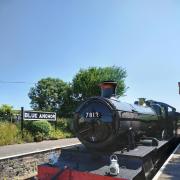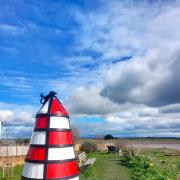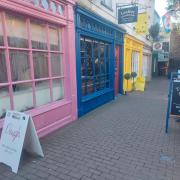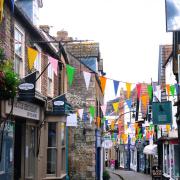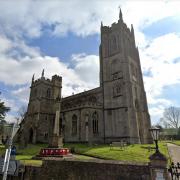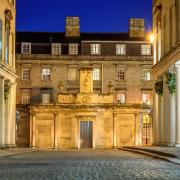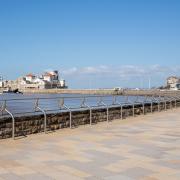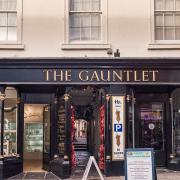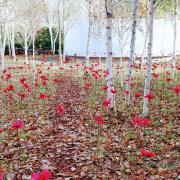In our special series Catherine Courtenay takes a look at village life in Somerset

It was more than 20 years ago, when their village store was about to close, that the people of Wellow joined together to create a volunteer-run community shop.
The Parlour Shop is still going; it’s one of the oldest-running community shops in the country.
If something needs doing, then the residents of Wellow will set about getting it sorted.
Richard Holland, who moved to the village 38 years ago, recalls: “Our heads said the shop wasn’t viable, but hearts said it needed to be. Then one resident, Marian Osborne, said she’d put money into it …and a few of us followed.” Marian, now in her 80s, still works as a volunteer in the shop.
Another example of this can-do attitude is the bus service, also set up and run by the village. A minibus takes commuters, school children and shoppers into Bath. There is a paid driver, with volunteers to step in if needed. Much of what happens is clearly about common sense and working together. Take fundraising for example. A Community Chest fund means that instead of every village group trying to raise its own funds among its own users and supporters, money from events goes into a single pot and is then shared around all the organisations.

Then there’s the oil scheme. Concerned about the environmental impact of tankers coming through the village, Richard sends a monthly email, seeing who needs oil, then he shops around for the best deal for delivery at the same time, not just in Wellow but also surrounding villages.
A community composting scheme is another success story, as is the pre-school, which was started in the 1980s by parents Clover Holland and Helen White - who even embarked on getting the necessary qualifications to run it.
A weekly village news email, including any messages or information from residents, is distributed by Richard, and a monthly printed magazine is delivered to every household. “There is a really strong community spirit,” says Emma Rose.
Emma moved to Wellow from London around 20 years ago and has her artist’s studio in the centre of the village. From here she can look down across the valley, a scene she never tires of, and there are many visual aspects of the village she loves - like the packhorse bridge across Wellow Brook; and the Church of St Julian’s, which dates back to medieval times and ‘is exquisite inside’, she says.
With its rich architectural and historic interest, the village is a designated conservation area and it’s on the edge of the Cotswolds Area of Outstanding Natural Beauty; yet it’s also very close to Bath and all that the city offers. As Emma says: “It’s a hidden gem and we have the best of both worlds.”
Mike Clarkson, who arrived in the village about 10 years ago, says Wellow is in a lovely location but what really makes it special is the people.
It has a mix of residents, those who were born there, newcomers and plenty of families; ‘Wellow is not a sleepy retirement village’, he says.
A big project in recent years was the sports field. “It was underutilised, so a group of us got together to make a multi-sports area,” says Mike.
Sports facilities now include tennis courts, cricket nets, a jogging track, outdoor gym, boules piste and pavilion.
And everyone seems to value Wellow’s pub, The Fox and Badger.
“It’s a really important hub for the village and very well run by Charles and Jo. They’ve kept a country pub feel to it, so it’s a very friendly local for us all,” says Mike.
“It’s fantastic,” agrees Emma, then adds: “A lot of people move here and never move away.”
Ancient burial:
Wellow is home to one of the country’s best examples of a Neolithic chambered tomb. Stoney Littleton Long Barrow is about a mile from the village and survived intact until about 1760 when the farmer who owned the site broke into its chambers in a hunt for building stone.
The tomb, or shrine, which dates from about 3,500BC, is about 30m long with multiple side chambers where people were buried. Bones were found when it was excavated in 1816, but most of the contents were subsequently lost or stolen. An ammonite fossil is set into the stone at
the entrance.
Stay or Buy?
Stay: The Art Cottage is a beautiful holiday cottage , set in Emma Rose’s garden near the studio where she works and which is open to the public.
Buy: A pretty two-bedroom, end terrace cottage with courtyard garden on Bath Hill is for sale at £290,000 (Crisp Cowley (Bath) Ltd).
Did you know?
The painter and illustrator Peter Blake lived in Wellow during the 1970s, when he became a founding member of the Brotherhood of Ruralists.




